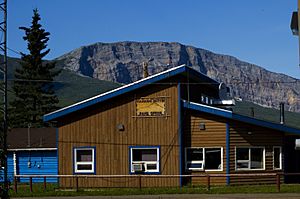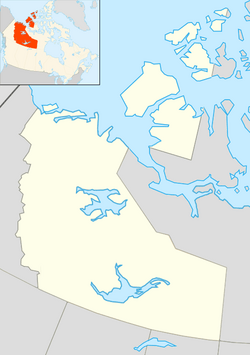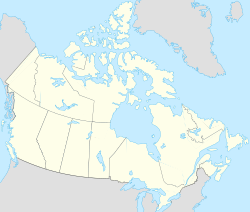Nahanni Butte facts for kids
Quick facts for kids
Nahanni Butte
Tthenáágó
|
|
|---|---|
|
First Nations/Dene Band - Designated Authority
(Nahanni Butte Dene Band) |
|

The Band Office in Nahanni Butte
|
|
| Country | Canada |
| Territory | Northwest Territories |
| Region | Dehcho Region |
| Constituency | Nahendeh |
| Census division | Region 4 |
| Area | |
| • Land | 78.99 km2 (30.50 sq mi) |
| Elevation | 182 m (597 ft) |
| Population
(2016)
|
|
| • Total | 87 |
| • Density | 1.1/km2 (3/sq mi) |
| Time zone | UTC−07:00 (MST) |
| • Summer (DST) | UTC−06:00 (MDT) |
| Canadian Postal code |
X0E 0C1 & X0E 2N0
|
| Area code(s) | 867 |
| Telephone exchange | 602 |
| - Living cost | 147.5 |
| - Food price index | 139.4 |
| Sources: Department of Municipal and Community Affairs, Prince of Wales Northern Heritage Centre, Canada Flight Supplement 2013 figure based on Edmonton = 100 2015 figure based on Yellowknife = 100 |
|
Nahanni Butte (pronounced "nuh-HAN-ee") is a small community in the Northwest Territories, Canada. It's also known by its traditional name, Tthenáágó, which means "strong rock" in the Slavey language. This community is located where two big rivers, the Liard and the South Nahanni River, meet. It's a special place because it's home to the Dene people.
Getting to Nahanni Butte
For a long time, Nahanni Butte was hard to reach by road. A special winter road was built every year to allow access. In October 2010, an all-season road was finished. This road goes as far as the Liard River.
To get across the river, people use a river taxi in the summer. In winter, they can drive across an ice road when the river freezes. There are no plans for a vehicle ferry to carry cars across the river.
Who Lives in Nahanni Butte?
The number of people living in Nahanni Butte changes over time. In the 2021 Census, there were 81 people living here. This was a small decrease from 87 people in 2016.
Most of the people living in Nahanni Butte are First Nations people. In 2016, there were 80 First Nations individuals. Many people in the community also speak a Slavey language.
First Nations People
The Dene people are the original inhabitants of this area. The community's Dene people are officially represented by the Nahɂą Dehé Dene Band. This band is part of a larger group called the Dehcho First Nations.




